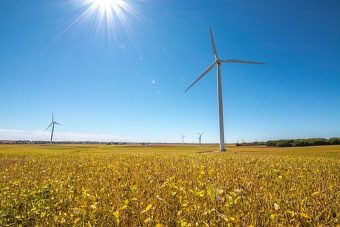
In a groundbreaking move, Oman is gearing up to become a global leader in the renewable hydrogen industry. This information is outlined in a new report by the International Energy Agency (IEA) which states that Oman’s considerable renewable energy resources and abundant land make it an optimal candidate to produce large quantities of low-emissions hydrogen.
Titled “Renewable Hydrogen from Oman: A Producer Economy in Transition”, the report was presented to Oman’s Minister of Energy and Minerals, Salim Al Aufi, by IEA Executive Director Fatih Birol in Paris. This first-of-its-kind report analyzes the potential of renewable hydrogen production in a fossil fuel producer country, setting a new precedent in the global energy landscape.
MORE:
- ABB HELPS ENSURE SUSTAINABLE POWER AT 75TH FORMULA E RACE AS TITLE SPONSOR
- IT’S TIME FOR GOVERNMENTS AND INDUSTRY TO ACT ON ENERGY EFFICIENCY
- RENEWABLE POWER ON COURSE TO SHATTER MORE RECORDS AS COUNTRIES AROUND THE WORLD SPEED UP DEPLOYMENT
Oman has set an ambitious target to produce 1 million tons of renewable hydrogen annually by 2030, rising to 3.75 million tonnes by 2040 and potentially 8.5 million tonnes by 2050. To put this into perspective, the 2050 target would surpass the total hydrogen demand in Europe today.
Oman, primarily known for its oil and gas production, is taking a unique approach to its energy future. As Minister Al Aufi states, “Oman is blessed with globally competitive solar and wind energy resources” that provide an economically rational basis for the country’s transition to more sustainable energy sources, including the production of renewable hydrogen.
The country’s hydrogen projects plan to use electrolysers powered by renewable electricity to extract hydrogen from desalinated seawater. Oman’s strategic location between Europe and Asia, combined with existing fossil fuel infrastructure that can be repurposed for low-emission fuels, positions it favourably in the global hydrogen market.
An important step towards achieving its ambitious targets was the establishment of Hydrogen Oman (HYDROM) in 2022, an independent entity tasked with leading and managing the country’s hydrogen strategy. The government has already allocated 1,500 square kilometres of land for development by 2030, with potential for significantly more in the future.

Investment to the tune of around USD 33 billion would be required to scale up Oman’s production of renewable hydrogen to 1 million tonnes by 2030. An additional USD 4 billion would be needed to increase renewables’ share of the national electricity mix to 20 percent, a target that Oman aims to achieve by 2030, according to the IEA report. Achieving these targets will significantly contribute to Oman’s clean energy transition, reducing domestic use of natural gas by 3 billion cubic metres a year and avoiding 7 million tonnes of carbon dioxide emissions.
This comprehensive and ambitious plan positions Oman as an emergent force in the global renewable energy sector. As other fossil fuel-dependent nations follow suit, Oman’s efforts could prove to be a blueprint for transitioning to a clean energy economy.
Source: IEA



